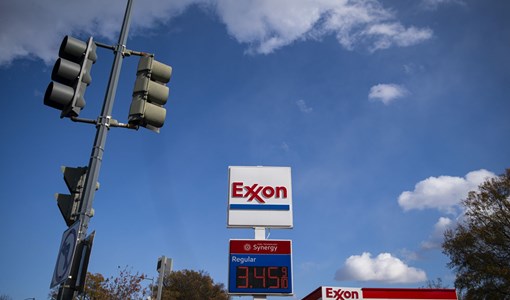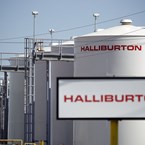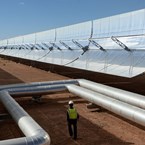Chesapeake Energy filed for Chapter 11 bankruptcy protection
U.S shale player, Chesapeake Energy Corporation, announced that it had voluntarily filed for Chapter 11 bankruptcy protection in the U.S. to help eliminate US$7 billion of debt after the recent oil price crash and coronavirus pandemic has had a devastating impact on the industry.
In a statement, Chesapeake says it intends to use the proceedings to strengthen its balance sheet and restructure its legacy contractual obligations to achieve a more sustainable capital structure. Chesapeake will implement a Chapter 11 plan of reorganisation to eliminate approximately $7 billion of debt.
Chesapeake said it will continue to operate during the Chapter 11 process.
Doug Lawler, Chesapeake's president and chief executive officer, stated, "We are fundamentally resetting Chesapeake's capital structure and business to address our legacy financial weaknesses and capitalize on our substantial operational strengths. By eliminating approximately $7 billion of debt and addressing the legacy contractual obligations that have hindered our performance, we are positioning Chesapeake to capitalise on our diverse operating platform and proven track record of improving capital and operating efficiencies and technical excellence. With these demonstrated strengths, and the benefit of an appropriately sized capital structure, Chesapeake will be uniquely positioned to emerge from the Chapter 11 process as a stronger and more competitive enterprise."
Head of Shale Research at Rystad Energy Artem Abramov commented: "Chesapeake had a challenging financial situation for many years and some processes were accelerated by the COVID-19 pandemic and the associated oil market downturn. It would be fair to say that the company’s Chapter 11 was anticipated by a large par of market participants and this is not really representative of the rest of the industry. A material portion of the US light oil supply is now controlled by supermajors and large independents with access to the core acreage and strong balance sheets. Most of these companies can gradually adapt even if oil prices of $35-40 WTI stay around for longer. When it comes to Chesapeake, many Chapter 11 resolution scenarios are now possible, but it is quite likely that we will see significant portfolio restructuring in the next few months."
Speaking after Chesapeake Energy filed for Chapter 11 bankruptcy protection today, Alex Beeker, principal analyst on Wood Mackenzie’s corporate upstream team, said: “It’s difficult to point to another company that made more of a widespread impact on the U.S. shale sector than Chesapeake. This filing has been a long time coming. It was likely going to happen with or without Covid-19."
He added: “Chesapeake refinanced debt at an interest rate above 10% in December 2019. The term loan facility included some aggressive covenant provisions, including a quarterly step-down in the net debt-to-EBITDA ratio. The company was forced to make some difficult decisions, notably whether or not to keep drilling unprofitable wells to support EBITDA just to avoid breaching debt covenants.”
Beeker said the position changed once the deal flow for gas properties froze. Chesapeake was unable to trim its portfolio and carried too much debt after the 2015 crash.
“New management teams have been in triage mode to sell assets and shift towards a more oil weighted company. Their efforts, while valiant, were too little, too late,” he noted.
KEEPING THE ENERGY INDUSTRY CONNECTED
Subscribe to our newsletter and get the best of Energy Connects directly to your inbox each week.
By subscribing, you agree to the processing of your personal data by dmg events as described in the Privacy Policy.
More oil news

Oil Jumps Toward $90 After Israel Is Said to Strike Iran Targets
Apr 19, 2024
AD Ports Group signs deal with ADNOC Distribution for global distribution of marine lubricants
Apr 19, 2024
Europe Car Sales Drop in March as EV Weakness Persists
Apr 18, 2024
ADNOC to redeem exchangeable bonds in ADNOC Distribution upon maturity in June 2024
Apr 18, 2024
Oil Edges Lower as Israel Weighs Up Response to Iranian Attack
Apr 17, 2024
Oil Erases Gain as Traders Weigh Israeli Response to Iran Attack
Apr 16, 2024
Kent confirms enhanced project alliances with ExxonMobil and Repsol Norge
Apr 16, 2024
Mexico’s Sheinbaum Plans to Spend Billions on Gas, Solar Plants
Apr 15, 2024
What’s Next for Crude Oil? Analysts Weigh In After Iran’s Attack
Apr 15, 2024
Oil Traders Weigh Risks of Iran-Israel Conflict in Tight Market
Apr 14, 2024
Energy Workforce helps bridge the gender gap in the industry
Mar 08, 2024
EGYPES Climatech champion on a mission to combat climate change
Mar 04, 2024
Fertiglobe’s sustainability journey
Feb 29, 2024
P&O Maritime Logistics pushing for greater decarbonisation
Feb 27, 2024
Neway sees strong growth in Africa
Feb 27, 2024
India’s energy sector presents lucrative opportunities for global companies
Jan 31, 2024
Oil India charts the course to ambitious energy growth
Jan 25, 2024
Maritime sector is stepping up to the challenges of decarbonisation
Jan 08, 2024
COP28: turning transition challenges into clean energy opportunities
Dec 08, 2023
Why 2030 is a pivotal year in the race to net zero
Oct 26, 2023Partner content

Ebara Elliott Energy offers a range of products for a sustainable energy economy

Essar outlines how its CBM contribution is bolstering for India’s energy landscape

Positioning petrochemicals market in the emerging circular economy

Navigating markets and creating significant regional opportunities with Spectrum
































